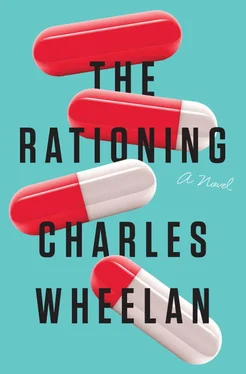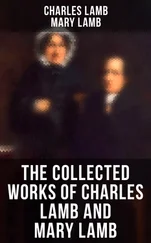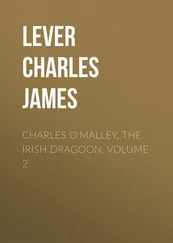“I’m headed to meet with the working group after this meeting,” I answered.
“Tell them to pick it up over there,” the President said. “It’s time to figure out what the hell is going on.” He was tired and cranky and under enormous pressure. Still, I was reminded of the description of him as the kind of guy who would yell at you when you missed a shot—something that rarely helps the next time down the court. Telling scientists to “hurry up and discover something” is not generally a recipe for success, either.
I HAD ACCESS TO THE WHITE HOUSE MOTOR POOL, ONE OF the many strange rituals to which I was becoming slowly accustomed. I signed my name in the log and a Secret Service agent called up a car for me. When the Town Car pulled into the driveway, I told the driver to take me across town to an office building where the NIH had a suite of offices. I slid into the backseat and tried to digest everything I had just heard. My Town Car privileges are relevant only because of an unfortunate coincidence. As my car pulled up in front of the NIH offices, Tie Guy was also arriving. He waited for me in front of the building and we went in together. “How’s it going?” I asked.
“Okay,” he said. “I’ll know a lot more tomorrow.” He did not ask why a mid-level scientist had arrived in the backseat of a black sedan, but he was a guy paid to draw inferences from patterns and was starting to see one. We took the elevator up to the third floor, where the task force had set up camp. I was, in theory, returning to my comfort zone—back with the scientists. I had left behind all the talk of “projecting strength in the South China Sea” and other concepts entirely foreign to my experiences. Except that at the NIH office I still felt alien, as if I were staring at the scene from outside a window on a dark night. Yes, I recognized most of the task force members sitting in cubicles and conference rooms arrayed across the floor, but their body language and the pace of their work made me feel estranged from them. Two of the younger staff members were laughing at something on a screen; when I walked closer I could see it was a YouTube video of baby giraffes. This was just another workday for them. Yes, it was an urgent task force, but these kinds of “urgent assignments” come and go. These people would all head to the health club after work, or maybe go out for drinks. They had no idea what was happening. I did, and that set me apart from them, almost like a physical separation.
Justman wandered up to me and shook my hand. “Guess what?” he asked cheerily.
“What?”
“Dust mites.”
“What about dust mites?” I asked.
“That seems to be the transmission mechanism for Capellaviridae .”
“Why didn’t you text me?”
“Sorry, I didn’t want to bother you over the weekend,” he said apologetically. “Yeah, it’s dust mites. They don’t usually bite, but there is a subspecies of the American dust mite that apparently does. And it’s a host for Capellaviridae —”
“That’s the transmission mechanism?”
“Yes. Man, you wouldn’t believe how many animals we’ve been testing: deer, squirrels, five species of mosquito—”
“But we still don’t know what triggers the virus to turn fatal,” I said.
“No,” Justman replied, visibly disappointed that I was not more excited by his news. “But now we know the vector. That’s huge. At least we know where this thing is coming from. It explains the patterns we’re seeing—why everyone has it in some places, no one has it in the tropics, that kind of thing.”
He was right. Understanding the “vector”—the mechanism by which a virus is carried and spread—is a huge deal. Because viruses cannot live independently, they must have a host. For smallpox, that was humans, and only humans. No other animal carries the smallpox virus, which is why we were able to wipe out the disease. On the other hand, a disease like Ebola is much harder to contain because bats and monkeys are also hosts. Even when we stop an Ebola outbreak in humans, as we did in Liberia and Sierra Leone in the 2010s, and again in the Congo in 2018, the virus still resides deep in the jungle, ready to leap back to the human population the next time some poor soul eats flesh from an infected monkey (“bushmeat”) or gets bitten by an infected bat. So yes, in Justman’s world, the dust mite discovery was a huge, exciting, relatively speedy development. In my world, we had a spreadsheet telling us that a lot of people were going to die if things did not move much, much faster.
One of the executive assistants clapped loudly to get the attention of the room. Justman and I paused our conversation to see what was going on. “Okay, everyone,” the young woman said, projecting her voice across the open work area. “Today is Saurav’s birthday.” There were some claps and cheers from the room. “We have cupcakes in the kitchen, if you are hungry.”
“Do you want a cupcake?” Justman asked. “They’re really good. They come from a little bakery around the corner.”
“No, I’m fine,” I said. “Look, we need to know why Capellaviridae turns fatal for some people and not others.”
“I know, I know,” Justman assured me. “We’ll get there, but this is huge progress. I’ve got people working around the clock here.”
“Thank you, I appreciate that.”
“Tomorrow we’ll have all the sampling data analyzed. You’ll be at that briefing, yes?”
“Of course.”
“That will be another piece of the puzzle,” Justman said confidently. “We’ll figure this thing out. We just need a little time.” He gave me a little encouraging pat on the shoulder.
“I understand,” I said.
“Are you sure you don’t want a cupcake?” he asked.
“No, I’m fine, thanks.”
WE MET IN THE OVAL OFFICE AGAIN THAT AFTERNOON. There was no new information, but it was the first official meeting with the Speaker of the House present. We started nearly forty-five minutes late because the President had to do a short news conference. An ex–police officer had shot thirteen people in a Cleveland shopping mall and then killed himself. The motive was not yet clear. Because the shooter was African-American and a former cop, it did not fit the pattern of previous shootings. The President made his statement, extending his condolences to the victims and their families, offering up all available federal resources, and so on. When he arrived back at the Oval Office, we already had a problem. The Speaker had been briefed that morning on the Capellaviridae situation and was told to keep all the information in the strictest confidence. Yet she turned up at the White House with her top aide. “He knows everything,” the Speaker declared. “He might as well sit in.” And so it began.
The President, already emotionally spent from dealing with the Cleveland shooting, was apoplectic. “We ought to just arrest her,” he spluttered when the Chief of Staff told him what was going on.
“None of this information is technically classified,” the Chief of Staff replied. “The intelligence agencies are not involved.” She had a calming effect on him; that was part of her job.
“Okay, fine,” the President said. “She can bring her mother if she wants to. Let’s go.”
The tenor of the meeting was entirely different from previous days. There was an odd mix of formality and passive aggression, with periodic bursts of comic interruption by the Strategist, who liked the Speaker even less than the President did. “We’ll know a lot more tomorrow when we get the results of the NIH sampling,” the Chief of Staff said, directing the remark to the Speaker.
Читать дальше












